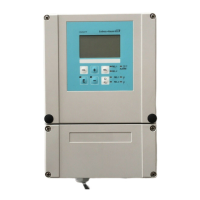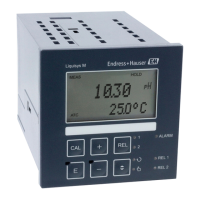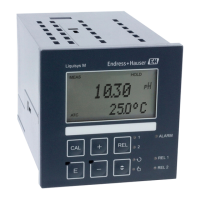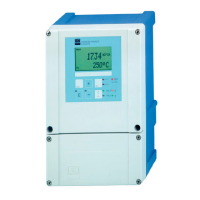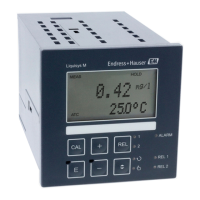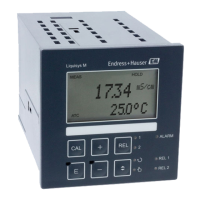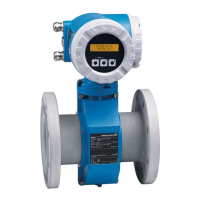9
3 Description
3.1 Application Areas
The Mycom CLM 152 transmitter is highly suitable for carrying out measuring and control
assignments in the following areas:
Food industry
Pharmaceutical industry
Chemical process engineering
Water treatment
Drinking water
Ultrapure water monitoring
3.2 Operating Principle
General Principle
The general principles of the instrument are the measurement of specific conductivity, the
measurement of specific resistance, concentration measurement, difference measurement
(if the instrument is equipped with two measuring channels). The CLM 152 also provides
remote measuring range switching.
Toroidal Conductivity
In toroidal conductivity measurement, an excitation coil generates a continuous magnetic
alternating field that induces an electric voltage in a liquid. The ions present in the liquid
enable a current flow which increases with increasing ion concentrations. The ion
concentration serves as a measure of conductivity. The current in the liquid generates a
magnetic alternating field in the receiving coil. The resulting current induced in the
receiving coil is processed in the measuring instrument and output as a conductivity
value.
The advantages of this measuring principle are accurate measurement in media with a
tendency to sediment, no electrically conductive connection between measuring cell and
liquid, an no polarization since there are no electrodes.
3.3 Measuring Functions
Concentration Measurement
Data for NaOH, HNO
3
, H
2
SO
4
and H
3
PO
4
are permanently stored in the instrument for this
mode of operation. The user can enter the data of four other substances within the
permissible value ranges, store them and activate them as concentration measuring
ranges whenever required. See chapter 7 Measurement Type.
Difference Measurement
Two measuring cells are used at different points of a process, e.g. for heat exchanger
monitoring (upstream and downstream from the exchanger) in media separation or
mixture control. The difference between the two measured values is used to control the
process.
Polarization Compensation (Contacting)
Polarization effects in the boundary layer between the electrode and measuring solution
limit the measuring range of contacting measuring cells. The Mycom CLM 152 transmitter
can detect and compensate for polarization effects using an innovative, intelligent signal
evaluation procedure. This results in a significant expansion of the measuring cell
measuring range (overview of conductivity measuring cells).

